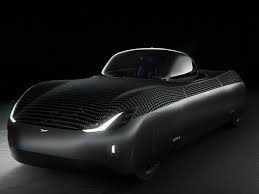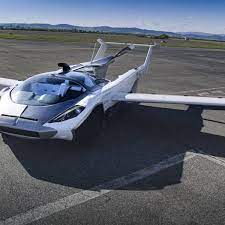The Federal Aviation Administration (FAA) is spearheading an innovative endeavor that promises to revolutionize transportation: flying cars. In this detailed article, we explore the faa flying cars pivotal role in regulating and facilitating the development of flying cars, known as electric vertical takeoff and landing (eVTOL) vehicles. From the challenges of airspace integration to ensuring safety standards, we delve into the intricacies of this transformative technology.
- The Vision of Flying Cars: The concept of flying cars has long captured the human imagination, promising a new era of futuristic mobility. eVTOL vehicles, with their vertical takeoff and landing capabilities, have the potential to reshape urban transportation, alleviate congestion, and provide efficient aerial mobility. This article delves into the vision behind flying cars and the promising advancements that bring this vision closer to reality.
- FAA’s Regulatory Leadership: As the primary authority responsible for aviation safety and regulation in the United States, the FAA assumes a pioneering role in overseeing the integration of flying cars into the national airspace. The article explores how the FAA is diligently working to establish comprehensive safety standards, certification processes, and airspace management protocols tailored specifically to eVTOL vehicles. This regulatory framework ensures the safe operation of flying cars and fosters industry innovation.
- Safety and Certification: The FAA’s paramount concern is public safety. The article delves into the FAA’s rigorous safety standards and certification processes for eVTOL manufacturers. From aircraft design and structural integrity to advanced avionics and propulsion systems, the FAA ensures that flying cars meet stringent safety criteria before they are permitted to operate commercially. By leveraging its expertise and collaborating with industry stakeholders, the FAA strives to create a safe and reliable ecosystem for flying cars.
- Airspace Integration and Infrastructure: The successful integration of flying cars hinges on the development of robust infrastructure and airspace management systems. The article explores the FAA’s efforts to address the challenges associated with airspace congestion, air traffic control, and communication protocols for eVTOL vehicles. It also examines the need for specialized landing pads, charging stations, and maintenance facilities to support the operations of these advanced aircraft.
- Public Acceptance and Community Engagement: Flying cars represent a paradigm shift in transportation, and their widespread acceptance is crucial for their success. The article discusses the FAA’s commitment to engaging the public, addressing concerns related to noise, privacy, and airspace congestion. By fostering transparency and providing accurate information, the FAA aims to build public trust, demystify the technology, and ensure that the benefits of flying cars are understood and appreciated by communities.
- Collaboration and Industry Support: The article highlights the FAA’s collaborative approach, working closely with industry leaders, innovators, and research institutions to advance the development of flying cars. By fostering an environment of collaboration, the FAA facilitates knowledge sharing, promotes research and development, and supports testing and certification processes. This partnership between the FAA and industry stakeholders accelerates progress and paves the way for a future where flying cars become an integral part of our transportation ecosystem.

The FAA’s leadership and regulatory framework for flying cars demonstrate their commitment to shaping the future of transportation. By establishing safety standards, facilitating airspace integration, and fostering collaboration, the faa flying cars is paving the way for a future where flying cars provide efficient, sustainable, and transformative mobility solutions. As the technology continues to evolve, the FAA’s pioneering efforts ensure that the promise of flying cars becomes a reality while maintaining the highest levels of safety and public confidence. The FAA’s trailblazing role in this transformative industry sets the stage for a new era of aerial transportation, offering unparalleled opportunities for innovation and reshaping the way we envision travel in the years to come.
In conclusion, The faa flying cars recognizes the importance of public acceptance and engagement. It actively addresses public concerns, such as noise pollution, privacy, and airspace congestion, through community outreach and transparency initiatives. By involving the public and providing accurate information, the faa flying cars aims to build trust and facilitate the adoption of flying cars as a viable and beneficial transportation option.
The successful integration of flying cars depends not only on regulatory efforts but also on the development of necessary infrastructure, including landing pads, charging stations, and maintenance facilities. The FAA collaborates with industry leaders and research institutions to address these infrastructure needs and ensure that the necessary support systems are in place.
Looking ahead, the FAA’s pioneering role in the field of flying cars sets the stage for a transformative era of transportation. As technology advances and safety standards evolve, the FAA’s commitment to innovation, collaboration, and public safety will continue to shape the development and adoption of flying cars. With faa flying cars careful regulation and strategic planning, flying cars have the potential to revolutionize urban mobility, alleviate congestion, and provide sustainable and efficient transportation solutions.

Ultimately, the FAA’s leadership and regulatory framework for flying cars underscore its dedication to advancing transportation technology while prioritizing safety, public acceptance, and the seamless integration of flying cars into our everyday lives. By embracing this transformative technology, the FAA is at the forefront of shaping a future where flying cars become an integral part of our transportation ecosystem, offering unparalleled opportunities for enhanced mobility and a new frontier of aerial transportation.